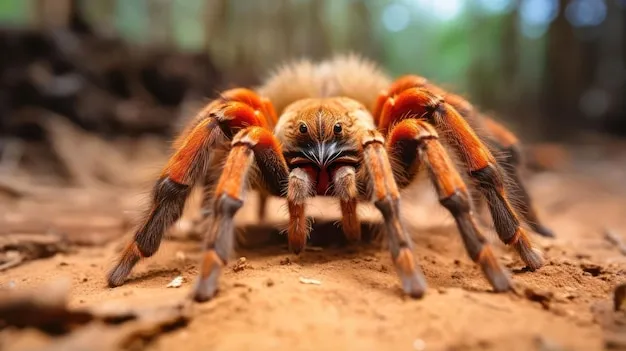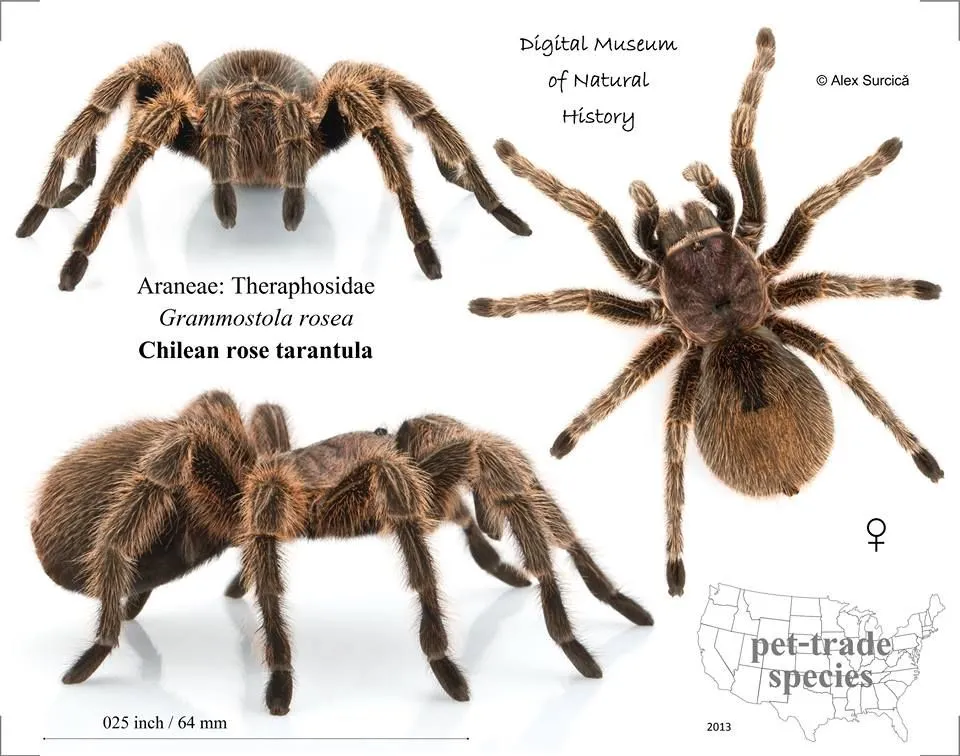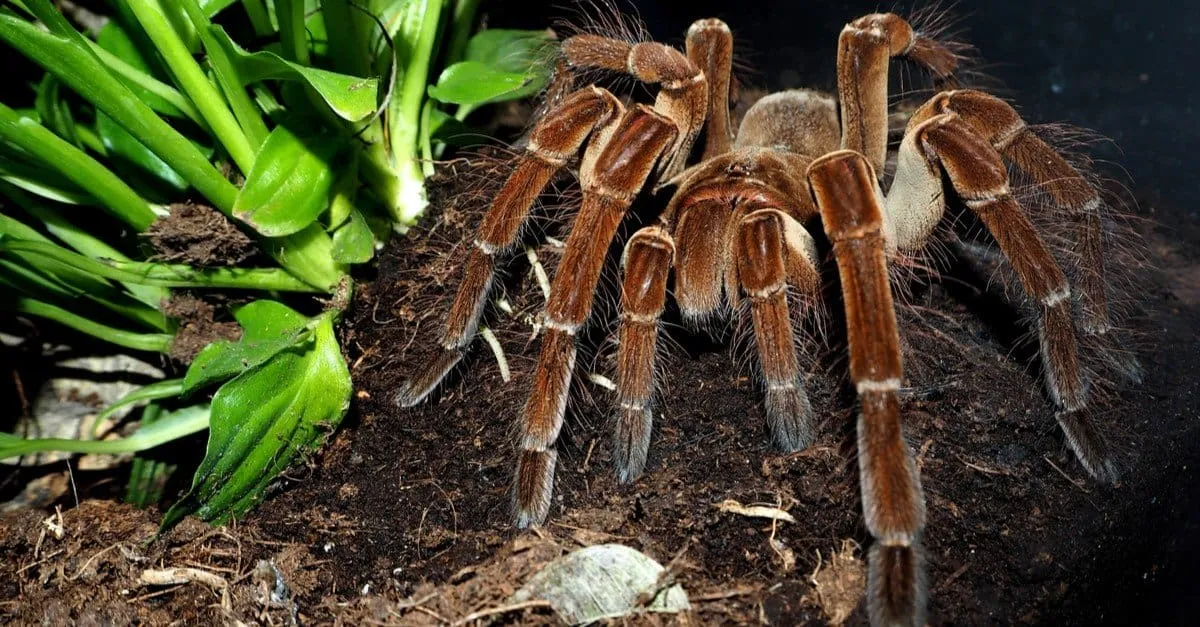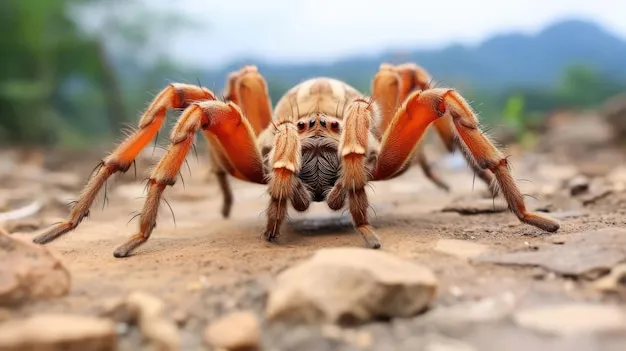What is a Tarantula?
Tarantulas are large, hairy spiders belonging to the Theraphosidae family. These impressive arachnids are found in various habitats across the globe, captivating both scientists and enthusiasts. Their size, coloration, and unique behaviors set them apart, making them a fascinating subject of study. These spiders are known for their imposing size, often with leg spans reaching over 10 inches, and their generally docile temperament compared to some other spider species. They play a vital role in their ecosystems as both predators and prey, contributing to the intricate balance of nature. From the rainforests of South America to the deserts of the southwestern United States, tarantulas have adapted to thrive in a wide range of environments, showcasing their resilience and adaptability.
Characteristics of Tarantulas
Tarantulas boast several distinctive characteristics that set them apart. Their bodies are typically divided into two main parts: the cephalothorax (fused head and thorax) and the abdomen. They possess eight legs, each covered in sensory hairs and claws that aid in climbing and capturing prey. Many species are covered in urticating hairs, which they can flick off as a defense mechanism, causing irritation to potential predators. Their eyesight, though not their primary hunting tool, is surprisingly keen, allowing them to detect movement and light. They have powerful fangs that they use to inject venom, primarily used to subdue their prey. Coloration varies greatly depending on the species, ranging from dull browns and blacks to vibrant blues, oranges, and reds. (Image: tarantula-characteristics)
Diversity and Habitat

The diversity of tarantula species is remarkable. They inhabit a wide array of habitats, from tropical rainforests and savannas to deserts and grasslands. Each species has adapted to thrive in its specific environment, with variations in size, color, and behavior. Some species are terrestrial, living in burrows in the ground, while others are arboreal, spending their lives in trees. Their diet typically consists of insects, but larger species may also prey on small vertebrates like lizards and rodents. Understanding their habitat and diversity helps appreciate their role in the ecosystem. The varying environmental conditions influence their growth, color, and behavior patterns. (Image: tarantula-habitat)
World Ranking of Tarantulas
Determining a definitive “world ranking” for tarantulas is complex, as there isn’t a single, universally accepted metric. However, several factors contribute to how they are perceived and valued by different groups. These factors include their size, rarity, conservation status, popularity in the pet trade, and geographic distribution. Analyzing these different aspects offers a comprehensive understanding of their standing in the natural world. The popularity of certain species can lead to higher demand within the pet industry, influencing their ranking. Also, their presence in various ecosystems plays a crucial role in their ecological importance. (Image: tarantula-overview)
Size and Classification
Tarantulas are among the largest spiders in the world, with some species boasting impressive sizes. The Goliath birdeater (Theraphosa blondi) is often cited as the largest by mass, while the Heteroscodra maculata (Togo Starburst Baboon) are known for their impressive leg spans. Size influences their ecological role, and their classification is constantly updated as new species are discovered and genetic analysis refines the relationships between different groups. The classification system helps scientists understand the evolutionary history and relationships between different species. The largest tarantulas can reach up to 12 inches in leg span, making them truly awe-inspiring creatures. (Image: tarantula-size)
Distribution across the Globe

Tarantulas are found on every continent except Antarctica. They thrive in a variety of environments, from the Americas to Africa, Asia, and Australia. Different species have adapted to specific climates and habitats, resulting in diverse distribution patterns. Their presence in various ecosystems showcases their adaptability. Some species have very restricted ranges, while others are more widespread. The geographic distribution of tarantulas is closely linked to factors such as climate, vegetation, and the availability of prey. Mapping their distribution provides valuable insights into their conservation needs and the threats they face. (Image: tarantula-distribution)
Top 5 Ranking Factors
Several key factors contribute to a tarantula’s ‘ranking’ or significance. These include popularity in the pet trade, their conservation status (are they endangered?), their geographic range (how widely distributed are they?), their size and physical characteristics, and their overall role in their ecosystem. These factors often intersect and influence one another. The popularity in the pet trade can increase the demand for a species, which can impact their conservation status. Understanding these aspects helps appreciate the complexity of tarantula’s status. (Image: tarantula-overview)
Popularity in the Pet Trade
Certain tarantula species are highly sought after in the pet trade. Their size, coloration, and relatively docile temperament make them attractive to hobbyists. The popularity of a species can influence its ‘ranking’ in terms of demand, value, and the attention it receives from conservation efforts. However, this popularity can also lead to over-collection from the wild, which can negatively impact wild populations. Responsible pet ownership and ethical sourcing from reputable breeders are crucial to mitigate these negative impacts. Careful consideration must be given to the welfare of the tarantulas. (Image: tarantula-pet-trade)
Conservation Status

The conservation status of a tarantula species is a critical ranking factor. Some species are facing threats, such as habitat loss and over-collection, which can lead to their endangerment. Conservation status is assessed based on population size, distribution, and threats. Species classified as endangered or critically endangered warrant increased conservation efforts. Protecting their habitats and regulating the pet trade are essential to ensure their survival. Supporting conservation initiatives and responsible breeding programs contribute to the preservation of tarantulas. (Image: tarantula-conservation)
Geographic Range and Habitat
A tarantula’s geographic range, or the area where it is found, is another significant ranking factor. Species with limited ranges may be more vulnerable to extinction than those with wider distributions. The type of habitat a tarantula occupies also influences its ranking. The destruction or degradation of habitats threatens many tarantula species. Efforts to conserve their habitats are vital for their survival. Understanding the connection between range and habitat is important for prioritizing conservation efforts. (Image: tarantula-habitat)
Threats to Tarantulas
Tarantulas face a variety of threats, which impact their ranking in the natural world. These threats include habitat loss, climate change, and over-collection for the pet trade. Understanding these threats is crucial for implementing conservation measures. Addressing these threats requires a combination of habitat protection, sustainable pet trade practices, and public awareness. These factors are impacting the tarantulas survival. (Image: tarantula-threats)
Habitat Loss

Habitat loss is one of the most significant threats to tarantulas. Deforestation, urbanization, and agricultural expansion destroy and fragment their natural habitats. This loss of habitat reduces the availability of food, shelter, and suitable breeding grounds, leading to population declines. Protecting and restoring habitats is therefore critical for their survival. Conservation efforts should focus on preserving their natural environments. (Image: tarantula-habitat)
Climate Change
Climate change poses another threat to tarantulas. Altered weather patterns, rising temperatures, and changes in precipitation can impact their distribution, behavior, and survival. As their habitats change, tarantulas may struggle to adapt, leading to population declines. Conservation strategies must consider the impacts of climate change. It is essential to take action to mitigate climate change and protect tarantula populations. (Image: tarantula-threats)
Conclusion
Tarantulas, with their fascinating characteristics and diverse distribution, occupy a unique position in the world. Their ‘ranking’, though not always straightforward, is influenced by a variety of factors, including their size, conservation status, and popularity. Understanding the threats they face, such as habitat loss and climate change, is vital for conservation efforts. By protecting their habitats, supporting sustainable practices, and promoting awareness, we can help ensure that these magnificent creatures continue to thrive for generations to come.
